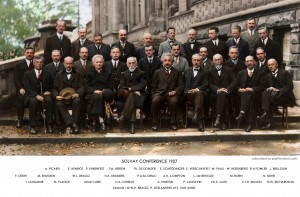 We cannot understand Thinkocrats without understanding the essence of the image above. For those who are not familiar with it, it’s a fresco painting about 500 years ago by Raphael in Vatican City. It’s the artist’s attempt to visualize the Platonic Academy or the School of Athens, in which thought leaders, scientists, artists and rulers gathered under the same roof to debate, learn and plan for a better future. Apart from a gross lack of diversity in this 5 century old painting, it truly represents the essence of our need to bridge between idealism and pragmatism. How to foster a rich environment for cross-disciplinary exchanges that would lead into innovation and transformational change.
We cannot understand Thinkocrats without understanding the essence of the image above. For those who are not familiar with it, it’s a fresco painting about 500 years ago by Raphael in Vatican City. It’s the artist’s attempt to visualize the Platonic Academy or the School of Athens, in which thought leaders, scientists, artists and rulers gathered under the same roof to debate, learn and plan for a better future. Apart from a gross lack of diversity in this 5 century old painting, it truly represents the essence of our need to bridge between idealism and pragmatism. How to foster a rich environment for cross-disciplinary exchanges that would lead into innovation and transformational change.
 The same pattern repeated throughout the history. The 1927 Solvay Conference is another great example of the impact of collective genius on the status of mankind. What we see today is no shortage of highly specialized conferences for each sub-specialty of sciences and industries. Also, we see an unprecedented increase in surely globalized but low quality connections through social media networks. Where we fall behind is the number of high quality inter-disciplinary connections that foster incremental change in our societies.
The same pattern repeated throughout the history. The 1927 Solvay Conference is another great example of the impact of collective genius on the status of mankind. What we see today is no shortage of highly specialized conferences for each sub-specialty of sciences and industries. Also, we see an unprecedented increase in surely globalized but low quality connections through social media networks. Where we fall behind is the number of high quality inter-disciplinary connections that foster incremental change in our societies.
TED and EG are definitely great examples for events that inspire and create a wonderful environment for meaningful interdisciplinary exchanges. What thinkocrats are committed to do better is one step further than “inspire and exchange”. It’s to use our collective thinking powerhouses to “add value” by creating tools, programs and solutions and to offer it to the world in a sustainable manner. That’s what can be said in short about Thinkocrats.
Next: Our Core Principles